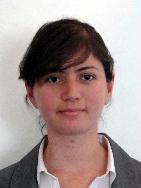 help
help
LURPA > Publications > PhD theses and French HdR
Black-Box identification of automated discrete event systems
On February 20, 2013
PhD defense of Ana-Paula ESTRADA-VARGAS (LURPA) Domain : Electronics - Electrical engineering - Control engineering
Jury
- Antonio RAMIREZ TREVINO, CINVESTAV - Guadalajara (Mexico), President
- Hassane ALLA, Professor at Université Joseph Fournier (France), Reviewer
- Carla SEATZU, Professor at University of Cagliari (Italy), Reviewer
- Ernesto Lopez MELLADO, CINVESTAV - Guadalajara (Mexico), Co-director
- Jean-Jacques LESAGE, Professor at ENS Cachan, Co-director
This thesis deals with the identification of automated discrete event systems (DES) operating in an industrial context. In particular the work focuses on the systems composed by a plant and a programmable logic controller (PLC) operating in a closed loop; the identification consists in obtaining an approximate model expressed in interpreted Petri nets (IPN) from the observed behaviour given under the form of a single sequence of input-output vectors of the PLC.
First, an overview of previous works on identification of DES is presented as well as a comparative study of the main recent approaches on the matter. Then the addressed problem is stated; important technological characteristics of automated systems and PLC are detailed. Such characteristics must be considered in solving the identification problem, but they cannot be handled by previous identification techniques. The main contribution in this thesis is the creation of two complementary identification methods.
The first method allows constructing systematically an IPN model from a single input-output sequence representing the observable behaviour of the DES. The obtained IPN models describe in detail the evolution of inputs and outputs during the system operation.
The second method has been conceived for addressing large and complex industrial DES; it is based on a statistical approach yielding compact and expressive IPN models. It consists of two stages; the first one obtains, from the input-output sequence, the reactive part of the model composed by observable places and transitions. The second stage builds the non observable part of the model including places that ensure the reproduction of the observed input-output sequence.
The proposed methods, based on polynomial-time algorithms, have been implemented in software tools, which have been tested with input-output sequences obtained from real systems in operation. The tools are described and their application is illustrated through two case studies.
- Type :
- Recent Ph.D and HDR defenses
- Place(s) :
- CINVESTAV, Guadalajara (Mexico)





